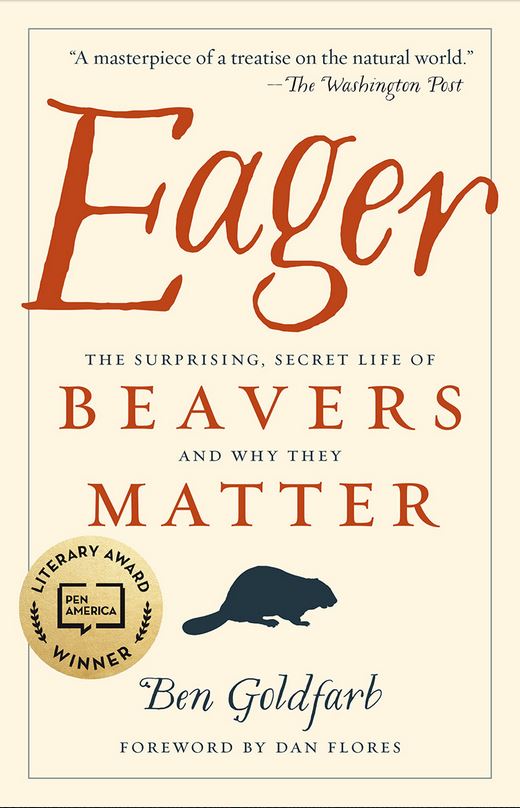
When I was a teenager, a family of beavers took up housekeeping behind my parent’s bunkhouse. They made their tidy lodge of sticks and mud in the swampy bay. After they toppled a good-sized tree onto the bunkhouse roof, the beaver-sized trees near the buildings were off-limits to the eager little critters. But my mom was indulgent with wildlife: she allowed bats to fly around indoors to keep down the mosquitoes. So the beavers were free to harvest any trees that were out of harm’s way. We liked to sneak to the water’s edge to catch a glimpse of our furry neighbors. If we got too close, they slapped the water with their flat tails and disappeared under the water lilies. Sadly, they lasted only a few winters before the trappers caught onto them.
This award-winning work by environmental journalist Ben Goldfarb chronicles these clever dam-building engineers and explains why they are so important. The health of rivers, streams and wetlands is dependent on them. But much like what happened to our industrious little friends, the entire population of North American beavers was nearly wiped out — by fashion (beaver fur was all the rage in the 1800s), habitat loss, and a failure by humans to understand how these rodents could be partners rather than pests.
If you can manage the microscopic font, this is a well-written and worthwhile story. For more on Ben Goldfarb, see his web site.
Eager: The Surprising, Secret Life of Beavers and Why They Matter
by Ben Goldfarb
New Arrivals, 2nd Floor, QL737 .R632 G64 2018
